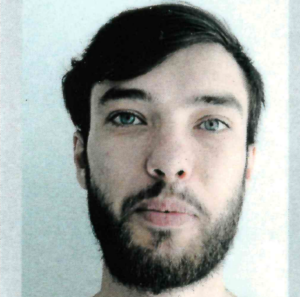 On Wednesday April 9th, at 9:30, Michael Wissmann (SPINTEC) will defend his PhD thesis entitled : Quantum Transport in Intrinsic Magnetic Topological Insulators
On Wednesday April 9th, at 9:30, Michael Wissmann (SPINTEC) will defend his PhD thesis entitled : Quantum Transport in Intrinsic Magnetic Topological Insulators
Place : IRIG/SPINTEC, CEA Building 10.05, auditorium 445 (presential access to the conference room at CEA in Grenoble requires an entry authorization, request it before March 28th to admin.spintec@cea.fr)
Video conference : https://univ-grenoble-alpes-fr.zoom.us/j/91948030941?pwd=eYquWbLIvLQiEY7ac2K6sbWdbl9sab.1
Meeting-ID: 919 4803 0941
Passcode: 347664
Abstract : The new family of intrinsically magnetic van-der-Waals layered topological insulators (iMTIs) Mn(Bi,Sb)2Te4, with strong spin-orbit coupling, is of great interest to investigate the interplay between topology and magnetic order in electronic band structures. It has gained increasing attention as a potential platform to investigate exotic topological phases, such as the Quantum Anomalous Hall (QAH) or the Axion Insulator states, tuned by magnetism. The QAH insulator state, is characterized by a dissipationless spin-polarized one-dimensional edge state, related to a high degree of quantization of the transverse resistance making it interesting for quantum metrology applications. However, intrinsic disorder (Mn/Bi intermixing, local non-collinear magnetic textures) brings experimental challenges to realize such topological devices in Mn(Bi,Sb)2Te4. In this thesis, we investigate both the classical magnetotransport properties (giving access to local magnetism) of MnBi2Te4 and MnSb2Te4 nanostructures, as well as their quantum coherent transport properties (related to dephasing induced either by structural and magnetic disorder or by the band-structure Berry phase).
Firstly, the high crystalline quality of both the antiferromagnetic MnBi2Te4 and ferromagnetic MnSb2Te4compounds is confirmed by conventional magnetotransport measurements in large magnetic fields (up to 18 T) on devices fabricated by exfoliation from bulk single crystals. In addition, transport measurements in pulsed high magnetic fields up to 55 T give evidence for the so far elusive Shubnikov-de Haas oscillations (SdH). A detailed analysis of the SdH amplitude in dependence of temperature and angle on two devices reveals their origin as due to topological surface state (TSS). To our knowledge, this is the first direct transport evidence of the TSS in MnBi2Te4 . As for the ferromagnetic MnSb2Te4, a comparative magnetotransport study on a large number of nanodevices reveals a striking thickness dependence of the magnetic properties such as the Curie-temperature and the coercive field, which is further underlined by bulk magnetometry measurements. By combining the results with a high angle annular dark field scanning transmission electron microscopy (HAADF-STEM) structural analysis of the crystal, we discuss the thickness-dependent properties in the context of magnetic antisite intermixing and surface oxidation. Furthermore a study of the feasibility of plasma-hydrogenation for bulk-charge carrier compensation addresses the problem of intrinsic doping in the iMTIs, which hinders the investigation of the topological states in thick samples.
Secondly, we study the fundamental physics of electron wave transport in MnBi2Te4 in different magnetic states by investigating the quantum correction to the conductance of mesoscopic Hall bars, down to 50 mK and in magnetic fields up to 18 T. We evidence the large-amplitude universal
conductance fluctuations related to an unprecedented long phase coherence length Lφ ≈ 300 nm for a mesoscopic magnet. By comparing different measurement configurations, we separate the different contributions to dephasing (magnetic flux, local spin textures, Berry phase). Moreover, we reveal a weak decoherence at higher temperatures. These results reveal the potential of magnetic topological insulators to realize quantum interferometers based on dephasing by magnetism.
Finally, this thesis considers some novel concepts for topological spintronics based on the intrinsic topology of multi-terminal devices built from the interconnection of ballistic edge channels, such as realized in the QAH regime of magnetic topological insulators. Their specific non-hermitian topology is associated to the so-called (quantum) skin effect, with some high sensitivity (exponential response) to small changes to the boundary conditions.
Jury :
Sergio VALENZUELA, Professor, ICN2, Barcelone, Rapporteur
Sebastian GÖNNENWEIN, Professor, TU Konstanz , Rapporteur
Anna ISAEVA, Professor, TU Amsterdam, Examinateur
Louis VEYRAT, CNRS Junior Professor, Toulouse, Examinateur
Axel LUBK, Professor, TU Dresden, Examinateur
David FERRAND, Professeur, UGA, Examinateur
Mairbek CHSHIEV, Professeur, UGA, Examinateur
Thesis supervisors :
Romain GIRAUD, Chargé de Recherche CNRS
Bernd BÜCHNER, Professor, TU Dresden




